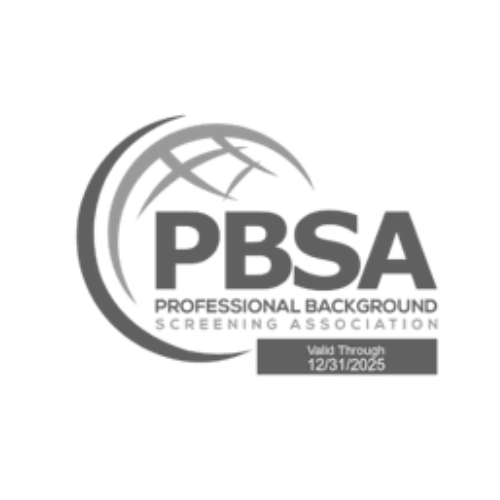Making the switch to a paperless HR department can offer numerous benefits, ranging from increased efficiency to improved security. Even so, transitioning to a digital system is often much more complex than it appears on the surface.
To effectively transition to a paperless system, businesses must consider the legality of the matter, create an internal storage system, maintain security and privacy standards, eliminate tedious manual work with automated workflows, manage employee records, and ensure compliance with governmental regulations.
These points will all be discussed in the following guide which will provide clear instructions on how to successfully transition to a digital-only HR department.
Benefits of Going Paperless in HR
Digital HR systems offer many clear advantages over paper-based alternatives.Employee Records: For starters, they make it much easier to keep track of employee records such as contact information, health benefits, and performance evaluations.Safety: Digital record-keeping makes it much simpler to manage documents more securely and access them from remote locations.Payroll Process: digital systems enable automated HR processes such as payroll, where transactions can be completed instantly rather than having to await sluggish data processing cycles.
Adopting a Digital Document Management System
What is DMS: To move forward with a paperless HR department, businesses must adopt an appropriate digital document management system (DMS). The DMS should contain both external and internal search functions for locating documents quickly, support a range of file types for optimal compatibility, and have sufficient storage capacity to fit all files.Cloud Storage: It is also strongly recommended that businesses opt for a cloud-based service in order to protect information against hardware failures and security breaches.Things to consider: When selecting a DMS, businesses should consider the cost of the system, the level of customer support offered, and the ease of use for employees. Additionally, businesses should ensure that the system is compliant with any relevant industry regulations and that it can be integrated with existing systems. By taking the time to research and select the right DMS, businesses can ensure that their HR department is able to operate efficiently and securely in a paperless environment.
Legal Considerations for Going Paperless
Before making the switch to a digital system, businesses need to carefully check the laws in their relevant jurisdiction to ensure they are in compliance with governmental regulations. This can be done by consulting with an expert legal consultant or by utilizing online resources. Additionally, businesses should ensure their chosen DMS complies with any data protection regulations that apply.
Creating an Internal Digital Storage System
After the legal considerations have been addressed, the next step is to build an internal digital storage system.
The system should be designed in such a way that only authorized personnel can access data and only approved documents can be stored. The digital storage system should also be supported by good record-keeping practices such as using strong passwords and keeping user activity logs.
It is important to ensure that the digital storage system is regularly backed up and that the backups are stored in a secure location. Additionally, the system should be regularly monitored for any suspicious activity and any security breaches should be addressed immediately.
Finally, the system should be regularly updated to ensure that it is up to date with the latest security protocols.
Best Practices for Securely Storing and Retrieving Documents
Maximizing the security of digital documents is essential when going paperless in HR.
It is critical that businesses ensure their chosen DMS includes top-notch encryption algorithms to protect data against unauthorized access. Furthermore, businesses should not store sensitive information on their own servers but instead utilize a cloud-based service that has sufficient protection measures in place. Finally, businesses should keep backups of their data as an extra measure of protection.
In addition, businesses should ensure that their DMS has a robust authentication system in place to verify the identity of users. This should include multi-factor authentication, such as a combination of passwords, biometrics, and security tokens. Furthermore, businesses should regularly review their security protocols and update them as needed to ensure that their documents remain secure.
Implementing Automated Workflows to Streamline Processes
Automation is another key tool in going paperless in HR.
Faster Response Times: Automated workflows can be used to respond to employee requests more quickly and accurately, as well as provide notifications when key events occur. This allows for faster completion of tasks and greater efficiency across the organization.
Tracking Activity and Streamlining Processes: Automation also helps HR departments track activity levels, detect potential issues or errors, and streamline processes such as onboarding and offboarding.
Ensuring Compliance: Automated workflows can also be used to ensure compliance with regulations and policies. By automating processes, HR departments can ensure that all employees are following the same procedures and that all necessary documents are completed and filed correctly.Increased Efficiency: Automation also helps to reduce the amount of time spent on manual tasks, freeing up HR staff to focus on more strategic initiatives.
Tips for Managing Employee Records Digitally
When managing employee records digitally, it is important that businesses follow best practices to ensure employees’ personal data remains secure.
These practices include using:
- Strong passwords for accounts
- Using multi-factor authentication when possible
- Regularly monitoring access activity lists
- Avoiding sharing passwords with employees
- Encrypting sensitive data
- Utilizing advanced security features such as geolocation locks.
In addition, businesses should ensure that all employee records are backed up regularly and stored in a secure location. This will help to protect against data loss in the event of a system failure or cyber attack. It is also important to ensure that all employees are aware of the company’s data security policies and procedures, and that they are trained on how to properly handle sensitive information.
Integrating Digital Systems with Legacy Software
Integrating the newly created digital system with legacy software can be a difficult task. To ensure a successful integration it is important to test all parts of the system before launching a new one. It is also important to ensure any necessary data migration between systems is done carefully and completely to avoid data loss or corruption. Additionally, it may be necessary to train employees on how to use the new systems in order to maximize efficiency.
It is also important to consider the security implications of integrating digital systems with legacy software. Security protocols should be established to protect sensitive data and ensure that only authorized personnel have access to the system. Additionally, regular security audits should be conducted to ensure the system is secure and up to date.
Ensuring Compliance with Government Regulations
Finally, businesses must take steps to ensure their new digital system complies with all relevant legal regulations.
This can involve evaluating the accuracy of data stored within the system, checking for potential conflicts between governmental regulations and internal processes, assessing security vulnerabilities in the system, and evaluating employee practices. Compliance requirements may vary by jurisdiction so businesses should ensure their chosen DMS meets all necessary criteria.
Conclusion
In conclusion,aking the switch to a paperless HR department can be a complex task that requires careful planning and execution. However, by following the steps outlined above businesses can successfully transition from using physical documents to a fully digital system with all the benefits that brings.
It is also important to remember that the digital system should be regularly monitored and updated to ensure it remains compliant with all relevant regulations. This can involve conducting regular audits of the system, as well as staying up to date with any changes in the legal landscape. By taking these steps, businesses can ensure their digital system remains compliant and secure.


















